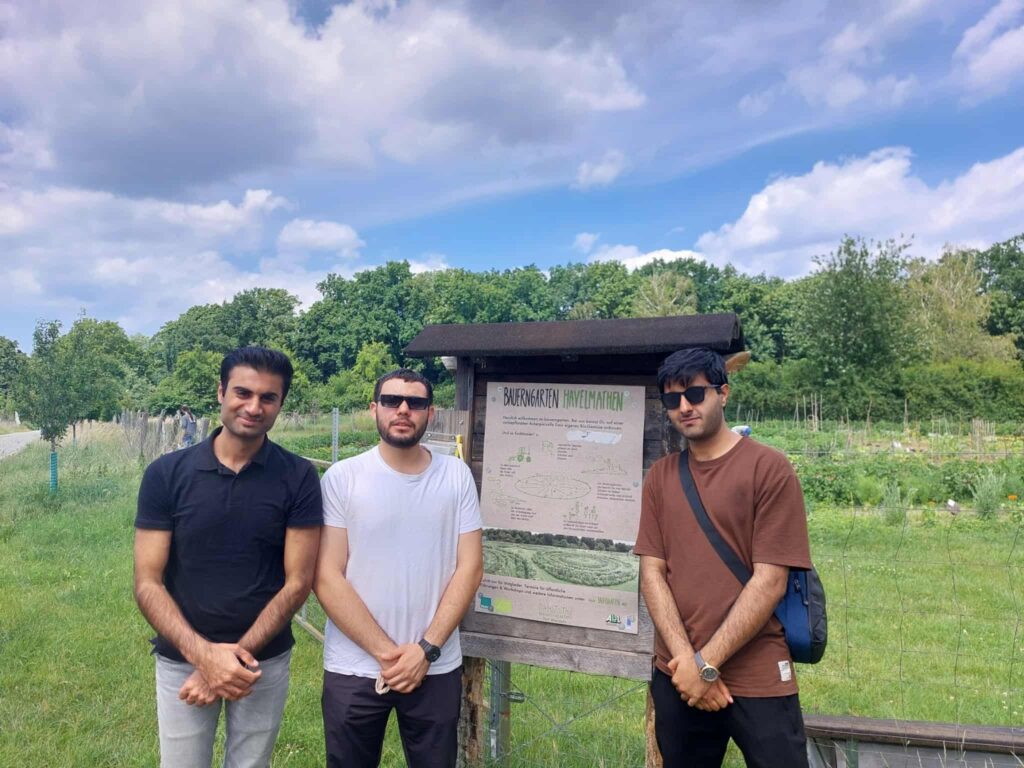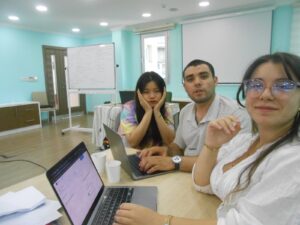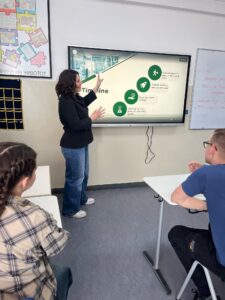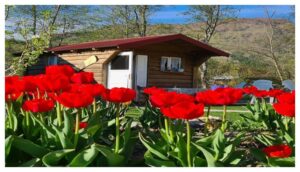My main task was to analyze data from a comprehensive publication on regenerative agriculture — more than 700 pages of detailed insights into soil health, crop rotations, and farm management. I read it from cover to cover, sometimes late into the night, and slowly began to transfer key data into Excel spreadsheets. Numbers turned into possibilities: yield per hectare, seasonal variations, soil regeneration rates, and even the delicate balance between human labor and mechanical support.Before this job shadowing, I had already been working on another project that reflected my interest in sustainable food systems and innovation. Together with a small team, I started to develop an idea for an app called ‘HarvestTable’, where we connect farmers directly to consumers. The vision is simple: more farmers will be able to profit from
 their food by removing third parties, making it easier and more affordable for buyers. More consumers will be able to enjoy the benefits of fresh, local food. Users can register as either a farmer or a buyer, create source profiles, and even message producers to schedule pick-up appointments. The app also allows buyers to search for specific food items by category, review prices, locations, pick-up times, and quality, and make purchasing decisions more easily. This entrepreneurial thinking shaped my perspective during the job shadowing and helped me analyze how technology could integrate with community farming models.
their food by removing third parties, making it easier and more affordable for buyers. More consumers will be able to enjoy the benefits of fresh, local food. Users can register as either a farmer or a buyer, create source profiles, and even message producers to schedule pick-up appointments. The app also allows buyers to search for specific food items by category, review prices, locations, pick-up times, and quality, and make purchasing decisions more easily. This entrepreneurial thinking shaped my perspective during the job shadowing and helped me analyze how technology could integrate with community farming models.At some point, I started sketching a hypothetical farm model on paper. The idea was simple but ambitious: what would it take to make a 4-hectare farm near Berlin work, with 2.5 hectares used for intensive, regenerative production and the rest for infrastructure, biodiversity, and shelter? I imagined beds filled with vegetables in rotation, trees lining the paths, flowers for pollinators, and small greenhouses to stretch the seasons. And always: no killing of animals — a farm where life is nurtured, not taken.
To complement this theory, I went on several excursions in Berlin. I visited urban gardening projects, where old shipping containers and raised beds create a unique mix of farming and community in the middle of the city. I also explored projects of the Havel Gardens in Gatow and Pankow, where they grow food in concentric circles — a model where every participant gets “a slice” of the circle to plant, tend, and harvest. These visits left me inspired but also a little restless: I kept asking myself how such concepts could be scaled to a larger piece of land without losing the sense of community and shared ownership.
During my job shadowing, I also began to think about what to grow and what to buy. Should we produce our own grains to make oat products like porridge or bake bread? The idea was appealing — grains have a special place in both agriculture and culture — but I quickly realized how much space and time grain cultivation would demand. A hectare of wheat or oats wouldn’t just take away from vegetable production, it would also require different equipment and processing capacity. For now, I stayed inconclusive, and I still wonder whether a combination of buying grains locally while focusing our land use on high-yield vegetables, fruits, and perennials might be the smarter path.
Then came the part that I thought was the easiest for me, the financial calculations, where I of course relied heavily on the use of AI. But, boy, it turned out to be a little nightmare to think about everything that needs to be taken into account. I began to model the different marketing possibilities and income chances. After some travels to SoLaWi projects (solidaric agriculture) I was intrigued but also a little abhorred to think it as such a model.
I discussed a lot with Hany and Eggert about the different models. Being realistic when you are passionate is sometimes more difficult than I thought. I had to scale down my expectations a lot. I was thinking about my own environment of students and how we consume. I was thinking about how much workers would want to earn if we wanted
to make such a model really fly. I started with unrealistic expectations and then slowly modeled myself and AI down.
Looking back, the job shadowing was more than just data entry or planning exercises. It was a chance to connect ideas with real places I visited, and to test theory with practice that real people had already gained. I learned to think critically about space, yields, and the human factor in agriculture. Most importantly, I started to see that regenerative farming is not only about producing food but also about creating systems where people, land, and community support each other — and where technology, like the HarvestTable concept, could play an important role in strengthening those connections.So, what is my outlook. I think, that I will develop with friends a really conclusive project, where the motivations and needs of co-investing families and individuals need much more room. We will then begin to form a cooperative for the production of food in Brandenburg and begin to hunt for the most convenient land and start up. At the same time I will begin to develop my app, but with a completely different focus on marketing fresh agricultural products from sustainable productions.In the month after me my friend from Pakistan, Farahzullah did a jobshadowing with Mostar Friedensprojekt e.V.. We agreed, that he should take a special effort to visit the people who are socially and culturally attached to the aim of my project of sustainable co-farming.
Abdul




